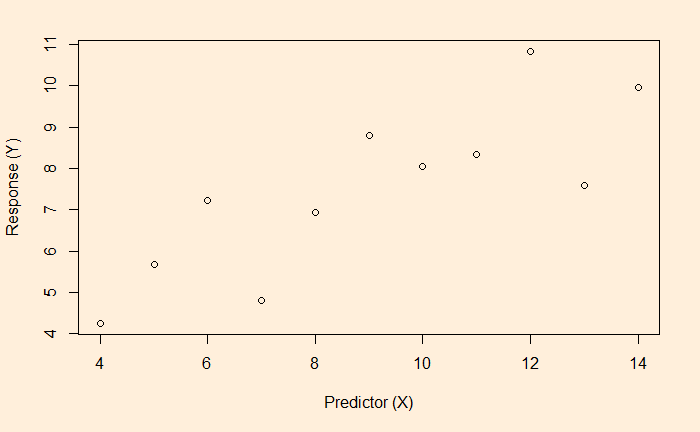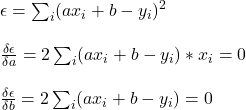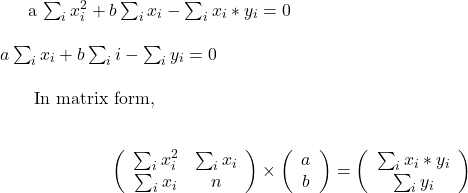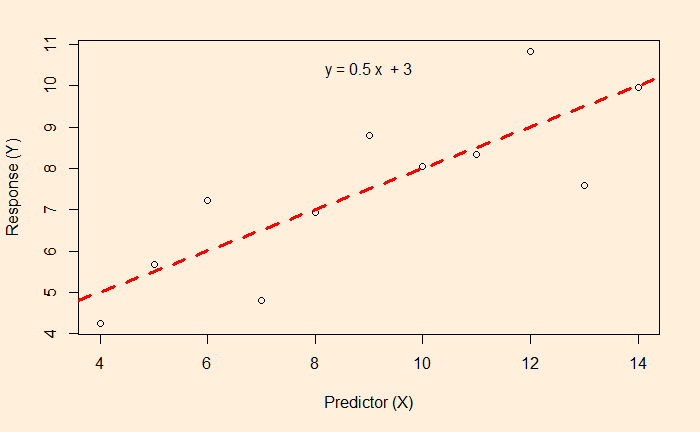OLS is the short form for ordinary least squares and is a linear regression method. The process is also known as curve fitting informally. The objective is to find the relationship between the dependent (the y) and independent (the x) variables; one eventually gets (to predict) the variation of y from the variation of x. In case you forgot, here is the scatter plot of the data.

We start with the equation of a line; because we fit a line (linear regression).
![]()
Now, the equation for the residuals, i.e. deviations of actual y from the model y.
![]()
As you’ve already guessed, square the residuals, sum them and find the values of the constants, a and b, that minimise the sum.

The above equations lead to two sets of linear equations that need to be solved.

We solve this equation for a and b using the following r code
Q1 <- data.frame("x" = c(10, 8, 13, 9.0, 11.0, 14.0, 6.0, 4.0, 12.0, 7.0, 5.0), "y" = c(8.04, 6.95, 7.58, 8.81, 8.33, 9.96, 7.24, 4.26, 10.84, 4.82, 5.68))
x_i_2 <- sum(Q1$x*Q1$x)
x_i <- sum(Q1$x)
nn <- nrow(Q1)
x_i_y_i <- sum(Q1$x*Q1$y)
y_i <- sum(Q1$y)
X <- matrix(c(x_i_2, x_i, x_i, nn), 2, 2, byrow=TRUE)
y <- c(x_i_y_i,y_i)
solve(X, y)
We get a = 0.5 (slope) and b = 3.0 (intercept). Now use the shortcut R code (“lm“) to verify
mm <- lm(Q1$y ~ Q1$x)
summary(mm)Call:
lm(formula = Q1$y ~ Q1$x)
Residuals:
Min 1Q Median 3Q Max
-1.92127 -0.45577 -0.04136 0.70941 1.83882
Coefficients:
Estimate Std. Error t value Pr(>|t|)
(Intercept) 3.0001 1.1247 2.667 0.02573 *
Q1$x 0.5001 0.1179 4.241 0.00217 **
---
Signif. codes: 0 ‘***’ 0.001 ‘**’ 0.01 ‘*’ 0.05 ‘.’ 0.1 ‘ ’ 1
Residual standard error: 1.237 on 9 degrees of freedom
Multiple R-squared: 0.6665, Adjusted R-squared: 0.6295
F-statistic: 17.99 on 1 and 9 DF, p-value: 0.00217The original scatter plot with the model line included


